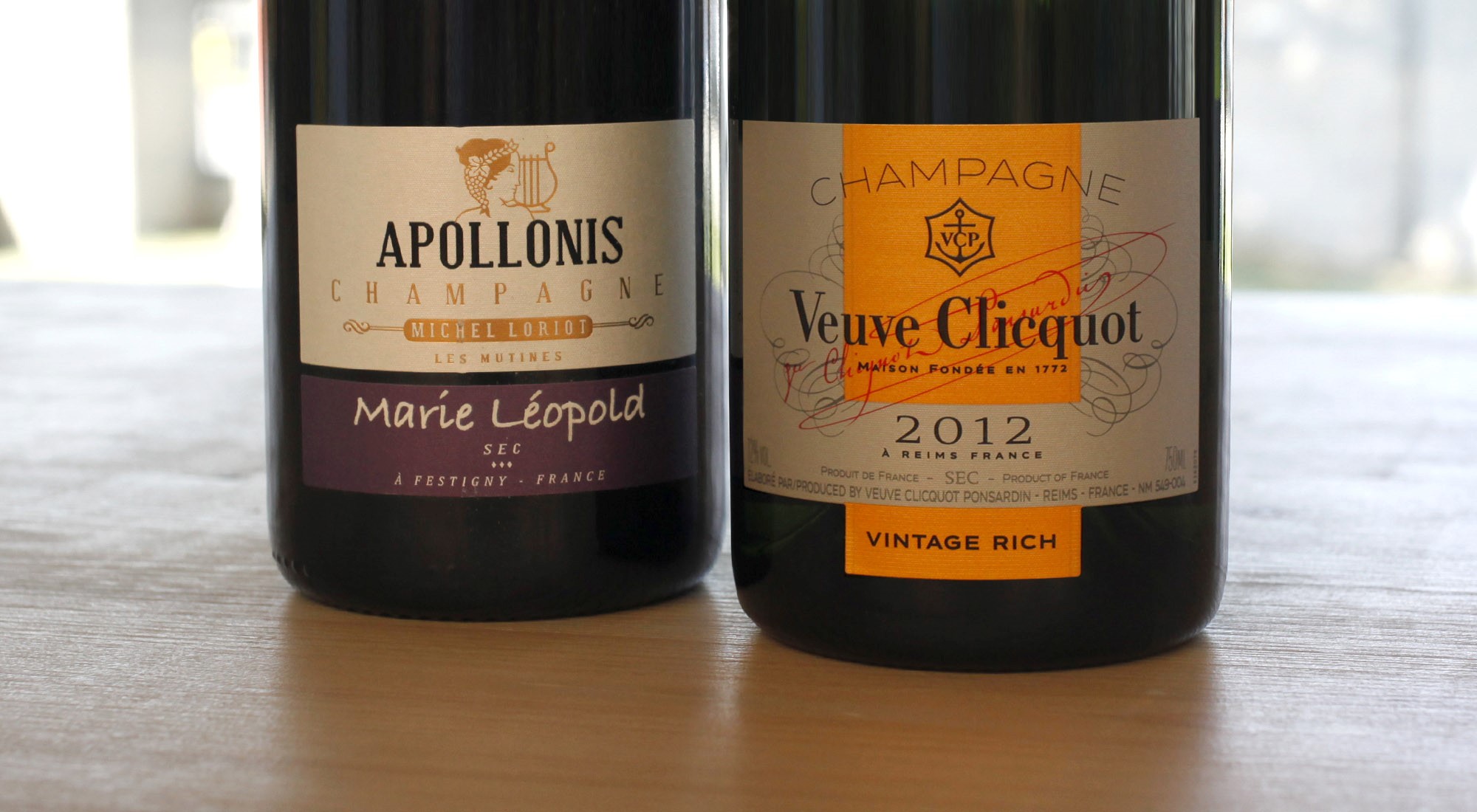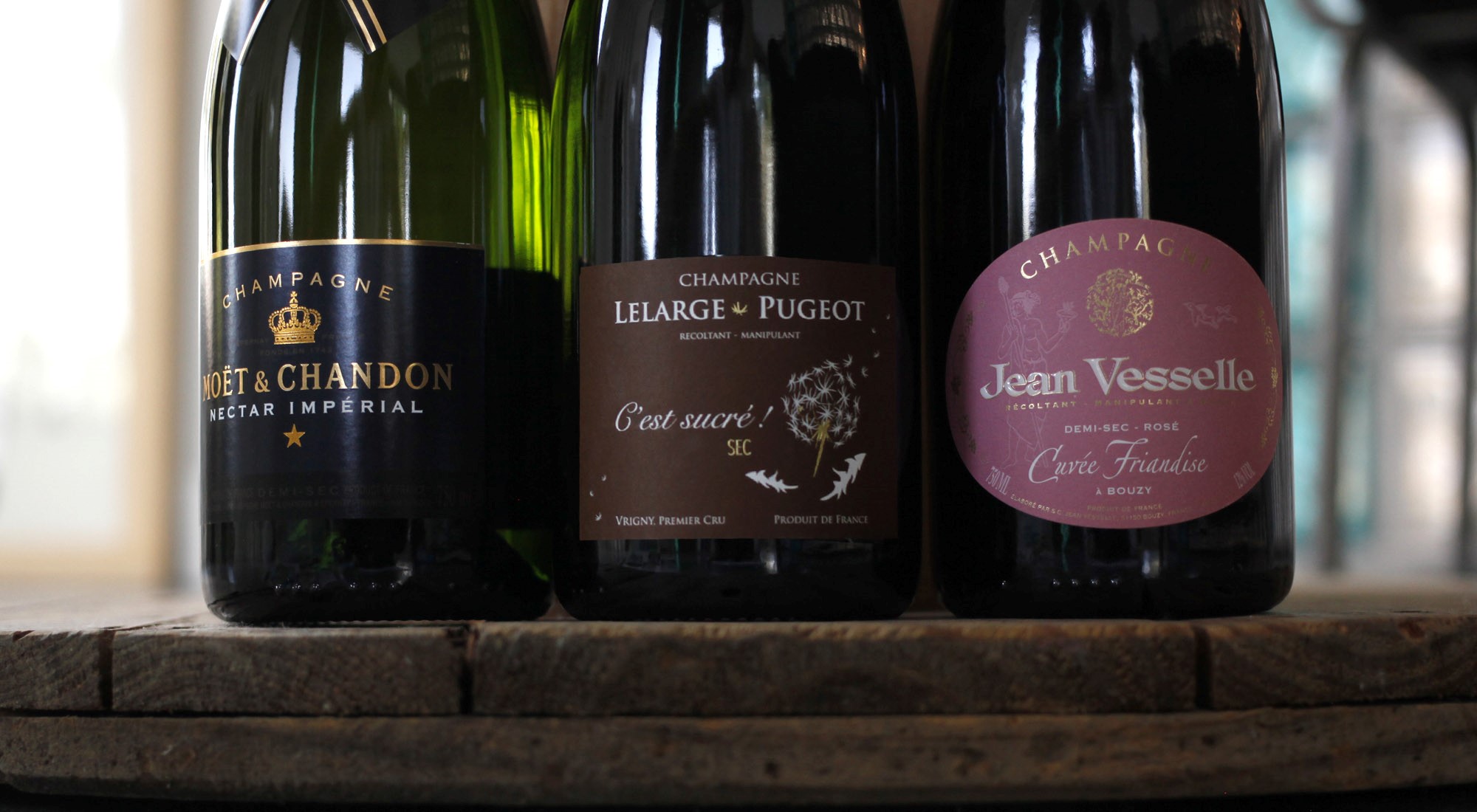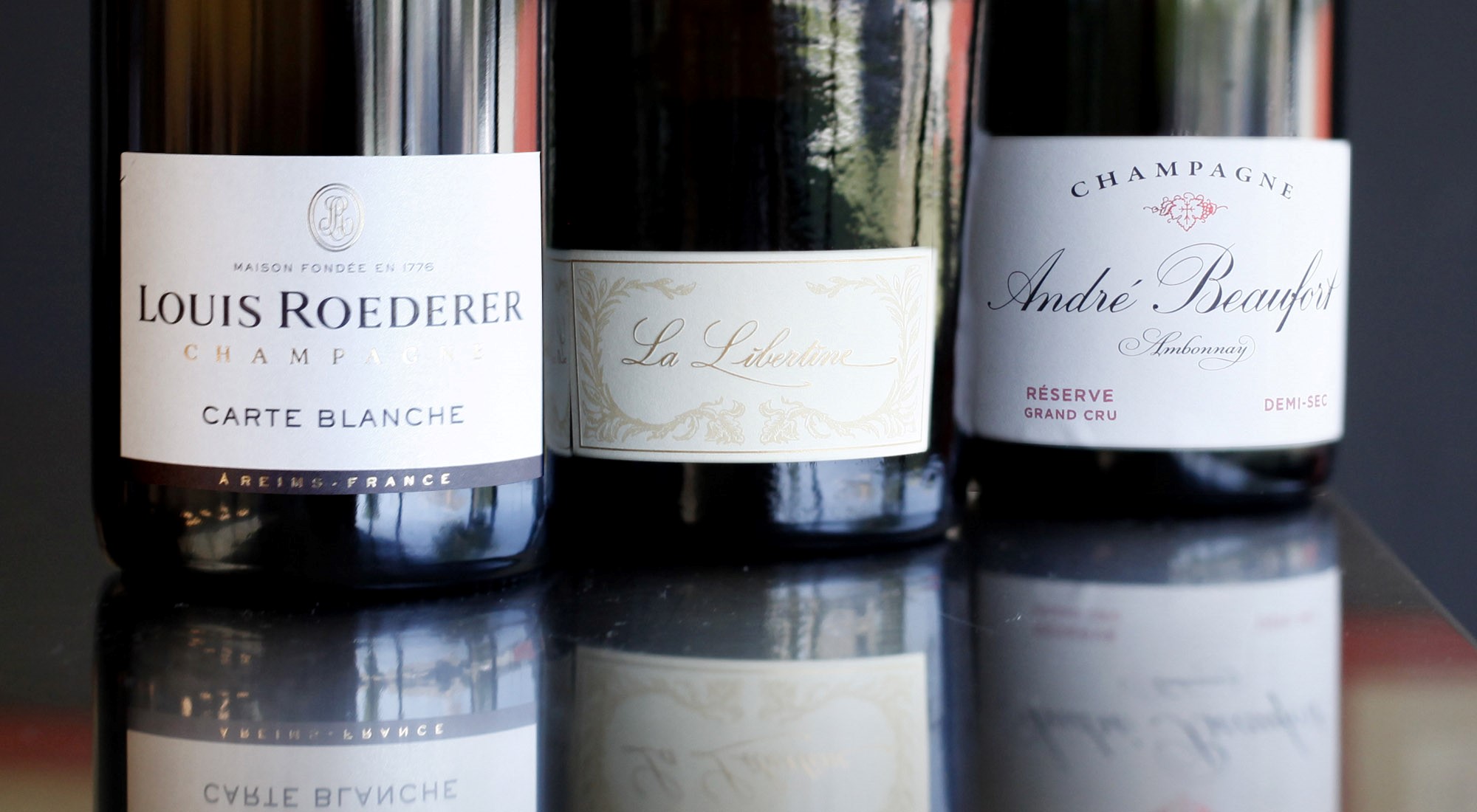Originally, Champagne was very different from what we are used to tasting today. In fact, during the course of the 18th century, the word Brut was totally unknown in Reims and the surrounding area. The customs of the time, which remained at least until the “gout anglais” revolution launched by Madame Pommery at the end of the 19th century, called for extremely dosed production. Actually, Champagnes Sec, Demi Sec and Doux had dominated tables throughout the world for a long time. It should not come as a surprise, however: in those decades, the dishes served at grand banquets called for much more structured and different combinations than those required by today’s meals. In the European courts, the high sweetness of a Champagne was considered an essential requirement for its appreciation. Taste began to change in the last quarter of the 19th century and today Champagnes Sec, Demi Sec, Doux are a simple niche in a universe where the master is the multiform declination of the “dry” bubble. Handbooks explain that sparkling wines with a residual sugar content of between 17 and 32 g/l shall be accounted for the category of Champagne Sec (or Dry). Champagne Demi Sec is a different matter and an ideal match for desserts thanks to a higher concentration of sugar, ranging between 32 and 50 g/l. More than 50 g/l define the realm of Champagne Doux, but it is a whole different story in terms of sweetness.

Champagne Apollonis Sec Marie Léopold by Michel Loriot, for example, is a blend where a dominant note of Meunier meets Chardonnay. With its high dosage, it is a Champagne Sec with a surprisingly smooth and creamy character. Its uniqueness lies above all in the great passion of the “melomaniac” winemaker who gave it life: Michel Loriot uses the symphonies of the greatest masters of classical music to stimulate, both in the vineyard and in the cellar, the effervescence and maturation of his vibrant masterpieces in the bottle.
If, however, we have to name the responsible for the rediscovery of the sweet character of Champagne in the mid-1990s, it is impossible not to mention the Veuve Clicquot Champagne Vintage Rich 2012. This label with its dynamic traits was the first lush step in the direction of a re-proposition of the ancient traits reinterpreted in a modern way, in pursuit of the most extravagant and innovative culinary combinations.

The same intuition and genius that was at the basis of the birth of Champagne Sec C'est Sucré by Lelarge-Pugeot. We are speaking about of an “assemblage” coming from the vineyards classified Premier Cru in Vrigny village ; a Cuvée which matures on the lees for at least 30 months with a very important final dosage: 28 g / l of sugar! A Champagne capable of accompanying the best desserts, especially with fruit.
This is the same know-how that has always characterised another family of “recoultant-manipulants”: the Vesselles. Their pass ticket into the world of Champagnes Demi-Sec comes with Jean Vesselle Champagne Rosé Cuvée Friandis - a Rosé de Saignée in purity that speaks once again of the Maison’s speciality: the processing of Pinot Noir.
Moët & Chandon Champagne Demi Sec Nectar Impérial is one of two interpretations of this very special type of wine from the famous Maison. It is the strong component of black grapes that dictates the style, together with the contribution of the vins de resérve during the blend for a generous result with a caressing character - a faithful portrait of a Maison that looks to the future while rediscovering the past.

A pure reflection of an established tradition is Louis Roederer Champagne Demi-Sec Carte Blanche. Here, too, a broad, creamy portrait is capable of finding roundness and balance thanks to the magical union of no fewer than eight different vintages, obviously narrated by the faithful reserve wines, the heritage and pride of the Maison Louis Roederer.
André Beaufort Champagne Demi Sec Réserve Ambonnay is also a journey down the memory lane: the balance of the vineyard, which has been organically cultivated for 50 years, the sumptuous aromas, the selection from the Grand Crus of Ambonnay, both for the predominant Pinot Noir and the Chardonnay.
This very long overview dedicated to Champagnes Sec, Demi Sec, and Doux ends with a real sweet dip in the past. Doyard Champagne Doux La Libertine is the result of a decade of wait, but above all of the experience gained in Vertus, in the heart of the Côte des Blanc, by 12 generations of Vignerons from a single family. This expertise has now made it possible to reshape the same taste characteristics of the first Champagnes of the 18th century in a cuvée of several vintages and a great deal of dosage. And once again, perpetuated in the magical cellars of this corner of Paradise is the legend of the bubble with which it is impossible not to fall in love.
Discover the selection of GLUGULP's Champagnes Sec, Demi Sec and Doux here!
